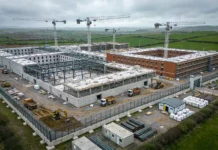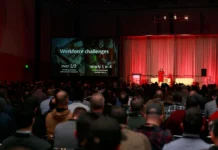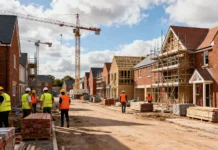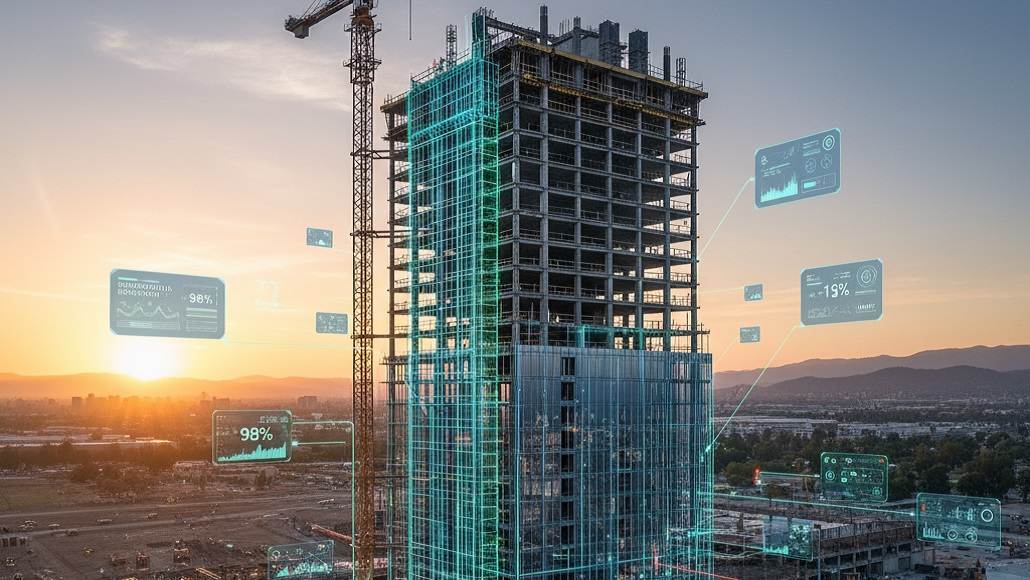Bridging Virtual and Physical Construction Realities
Construction projects evolve from abstract concepts to complex physical systems traversing design, engineering, fabrication, assembly, and operational phases. Digital twins in construction represent comprehensive virtual replicas of physical infrastructure capturing every design element, material property, and system relationship. These digital models persist throughout projects’ entire lifecycles, continuously updated with actual field performance data enabling unprecedented insights into constructed asset behavior.
Digital twins represent revolutionary advancement beyond Building Information Modeling (BIM). While BIM documents design intentions, digital twins capture actual constructed reality, continuously updating as field conditions diverge from design assumptions. This dynamic relationship between virtual and physical realms enables predictive capabilities transforming how construction organizations manage assets and respond to emerging challenges.
The Foundational Technology Landscape
Building Information Modeling Evolution
BIM emerged as game-changing technology enabling multidisciplinary design collaboration through shared digital representations. Traditional design processes fragmented across disciplines produced numerous conflicts only discovered during construction phases. BIM platforms consolidating architectural, structural, mechanical, and electrical information eliminated many conflicts early when changes cost minimally.
Contemporary BIM advances significantly beyond initial conflict detection capabilities. Parametric design enables modification of central parameters automatically updating dependent systems throughout models. Simulation capabilities embedded in BIM platforms enable analysis of performance consequences before physical construction begins. Analysis of natural lighting, thermal behavior, acoustic performance, and structural response now inform design decisions during conceptual phases.
Digital twins build upon BIM foundations while introducing critical innovations. Where BIM represents static design intent, digital twins dynamically update as construction progresses and actual performance data becomes available. Sensor networks throughout constructed infrastructure continuously feed performance observations into digital twin models, creating continuously accurate representations of actual asset states.
Sensor Technology Integration
IoT sensor proliferation enables comprehensive data collection throughout infrastructure lifecycles. Structural sensors monitor stress, deflection, and vibration patterns. Environmental sensors track temperature, humidity, air quality, and light intensity. System sensors monitor mechanical and electrical equipment performance. This sensor data concentration represents unprecedented visibility into infrastructure behavior.
Wireless communication technologies enable sensor data transmission without invasive cabling. LoRaWAN networks, 5G, and proprietary protocols overcome previous limitations restricting sensor deployment to critical locations. Expanding sensor networks reduce data collection costs while increasing monitoring granularity. Modern infrastructure increasingly resembles living organisms with distributed sensory systems providing continuous environmental awareness.
Data processing and edge computing address challenges posed by massive sensor data volumes. Processing data at the edge—on sensors themselves or nearby gateways—reduces communication bandwidth while enabling real-time response without cloud computing delays. Hierarchical data processing distributes intelligence across network layers, optimizing performance and reliability.
Digital Twins as Operational Intelligence Platforms
Real-Time Performance Monitoring and Analysis
Digital twins continuously compare actual infrastructure performance against expected behavior patterns. When sensors detect deviations from normal parameters, anomaly detection algorithms immediately identify divergence severity and location. This early warning capability enables intervention before minor issues escalate to major problems.
Structural health monitoring through digital twins enables detection of damage progression invisible through conventional inspection. Subtle stress concentration changes, gradual settlement patterns, or material degradation processes become apparent through continuous data analysis. Maintenance teams access specific information about damage location, severity, and required remediation rather than generalizations from periodic visual inspections.
Real-time dashboards present complex performance data in intuitive visualizations enabling facility managers to comprehend infrastructure state without technical expertise. Color-coded severity indicators, trending displays, and alert hierarchies focus attention on critical issues while providing confidence about nominal systems. This accessibility democratizes facility management enabling non-specialists to make informed decisions.
Predictive Maintenance Transformation
Conventional maintenance schedules assume uniform equipment degradation, deploying service at predetermined intervals regardless of actual condition. Digital twins enable condition-based maintenance scheduling optimized to actual asset states. Equipment experiencing lower-than-expected stress continues operating while equipment showing early degradation indicators receives attention before failures occur.
Machine learning algorithms trained on extensive historical data develop degradation models for specific equipment and operational contexts. These algorithms predict remaining useful life with increasing accuracy as operational data accumulates. Maintenance organizations use these predictions to schedule repairs optimally—replacing components just before failure rather than prematurely or reactively.
Spare parts inventory optimization becomes possible through predictive maintenance accuracy. Rather than maintaining large stockpiles for emergency replacements, organizations maintain minimal inventory with high confidence that predicted replacement schedules enable timely procurement. This inventory reduction decreases capital requirements while improving cash flow.
Design Optimization and Simulation Through Digital Twins
Performance-Based Design Validation
Digital twins enable thorough testing of design assumptions against simulated performance. Complex loading scenarios, environmental conditions, and operational requirements can be modeled without physical construction. Design teams identify suboptimal decisions, enabling iteration and refinement before fabrication commitments.
Energy performance simulation provides particular value during design phases. Detailed thermal models predict building energy consumption accounting for specific material properties, geometric configurations, orientation, and occupancy patterns. Design teams use these predictions to compare alternative approaches, optimizing energy efficiency through informed decisions rather than generic principles.
Structural simulation validates load paths, stress distributions, and safety factors enabling confident design advancement. Non-linear analysis captures behavior impossible through simplified hand calculations. Finite element analysis coupled with digital twin simulations enables understanding of complex structural behavior informing design optimization.
Clash Detection and Constructability Analysis
Parametric BIM models identify conflicts between systems before construction begins. Mechanical equipment colliding with structural elements, pipe routing conflicts with electrical conduits, and spatial interference issues all become apparent through digital modeling. Resolution during design phases costs minimally compared to field rework during construction.
4D simulation sequences construction activities identifying workflow conflicts and optimizing sequencing. Equipment placement requirements, material delivery logistics, and worker safety considerations become visible through 4D models. Construction teams identify improvements before actual construction begins, streamlining operations and reducing delays.
5D integration of cost information enables value engineering analysis. Digital twins help quantify cost implications of design decisions, enabling evaluation of performance-cost tradeoffs. Decisions that marginally improve performance at significant cost premium become apparent, enabling informed choices balancing value and performance.
Integration with Operational Systems and Facilities Management
Connected Asset Management
Digital twins connect to facilities management systems enabling comprehensive asset tracking. Equipment maintenance records, lifecycle costs, performance history, and current status information consolidate into integrated platforms. Facilities managers access complete asset information informing replacement, upgrade, or remediation decisions.
Automated work order generation in response to monitored conditions streamlines maintenance operations. When digital twins detect issues requiring attention, maintenance management systems automatically create work orders with specific location and remediation guidance. Technicians access this information on mobile devices, reducing coordination overhead.
Preventive maintenance scheduling optimizes labor efficiency. Digital twins predict maintenance needs enabling scheduling during periods when minimal operational disruption occurs. Routine activities consolidated into optimized service visits reduce technician travel costs while improving customer satisfaction through consolidated maintenance events.
Building Occupant Experience Optimization
Environmental sensors feeding digital twins monitor conditions affecting occupant comfort and productivity. Temperature, humidity, air quality, and light intensity become visible throughout facilities. Automated systems adjust HVAC and lighting in response to measured conditions, maintaining comfort while minimizing energy consumption.
Space utilization monitoring through occupancy sensors reveals actual usage patterns. Conference rooms sitting empty despite frequent reservations become apparent, enabling reallocation of resources. Under-utilized spaces may be reconfigured or repurposed. Over-capacity areas receive expansion. These decisions base upon objective utilization data rather than assumptions.
Tenant experience improves through responsive facilities management. When environmental issues affect comfort, occupant complaints trigger investigation supported by digital twin sensor data. Issues resolve faster through objective information about specific conditions rather than subjective comfort descriptions.
Advanced Analytics and Artificial Intelligence Applications
Anomaly Detection and Predictive Failure Analysis
Machine learning algorithms process sensor data identifying patterns associated with equipment degradation. Subtle changes in vibration patterns, acoustic signatures, or operational parameters become recognizable to trained algorithms even when not apparent to human operators. These early warnings enable intervention before catastrophic failures.
Clustering algorithms group similar equipment or facilities identifying best performers and laggards. Facilities or equipment underperforming compared to peers receive investigation uncovering operational or design issues. Best practices from superior performers become documented and propagated throughout organizations.
Root cause analysis capabilities embedded in digital twin analytics identify fundamental causes behind observed problems. When equipment failures occur, analysis of sensor data leading to failure points reveals underlying causes. Organizations share these discoveries improving design and operational practices across portfolios.
Optimization and Continuous Improvement
Digital twins enable continuous optimization of infrastructure operations. Algorithms testing thousands of operational strategies identify approaches delivering superior performance. HVAC schedules, lighting controls, occupancy-based space management, and equipment sequencing all become subjects for algorithmic optimization.
Machine learning models continuously refine performance predictions based on emerging data. As buildings age and operational patterns evolve, models adapt reflecting actual system behavior. Organizations benefit from increasingly accurate predictions over time as models incorporate expanding historical information.
Simulation of alternative scenarios enables evaluation of potential changes before implementation. Proposed operational changes, equipment upgrades, or spatial modifications can be modeled within digital twins predicting performance consequences. Organizations make confident decisions about modifications based on predicted outcomes.
Digital Twin Implementation Challenges and Strategies
Data Quality and System Integration
Implementing digital twins requires resolving significant data quality challenges. Sensor data contains noise, gaps, and occasional errors. Building models capturing design intentions diverge from actual constructed conditions. Successfully implementing digital twins requires rigorous data governance ensuring information quality supports decision-making confidence.
System interoperability remains challenging given diverse equipment manufacturers and software platforms. Open standards enable integration of disparate systems, yet proprietary approaches persist creating integration challenges. Progressive organizations prioritize interoperability during procurement decisions supporting digital twin ecosystem development.
Cybersecurity considerations become critical as connected infrastructure increases digital threat exposure. Digital twins and sensor networks require protection against unauthorized access, data manipulation, and system control hijacking. Security-by-design principles embedded during development prove more effective than retrofitted security measures.
Workforce Development and Change Management
Digital twin implementation requires workforce capabilities transcending traditional construction and facilities management expertise. Data science, information technology, and system integration skills become essential. Organizations transitioning to digital twin operational models invest in workforce development ensuring personnel possess necessary capabilities.
Change management becomes critical for successful implementation. Personnel accustomed to traditional practices may resist digital systems requiring different approaches. Progressive communication, comprehensive training, and demonstrated benefits help personnel embrace digital transformation. Organizations recognizing change management importance achieve substantially higher success rates.
Cost considerations influence implementation strategies. Comprehensive digital twins monitoring every system exceed budgets for many organizations. Phased implementations prioritizing critical systems enable capability development while managing costs. As organizations prove value from initial implementations, expansion becomes justified.
Future Evolution and Emerging Capabilities
Advanced Visualization and Immersive Interfaces
Virtual reality and augmented reality interfaces promise revolutionary ways to interact with digital twins. Maintenance technicians accessing augmented reality overlays see component information, maintenance history, and repair procedures directly within their physical field of view. This integration of digital and physical information reduces cognitive overhead while improving accuracy.
Immersive virtual reality enables facility tours and system walkthroughs without physical presence. Remote stakeholders experience facilities as if physically present, enabling collaboration despite geographic separation. This capability proves particularly valuable for distributed organizations managing geographically dispersed portfolios.
Autonomous Systems Integration
Autonomous robots inspecting facilities and performing maintenance tasks will increasingly leverage digital twins for navigation and task execution. Rather than preprogramming robot paths, autonomous systems reference digital twins identifying optimal routes and maintenance locations. As autonomous capabilities advance, human oversight requirements decrease enabling expanded deployment.
Autonomous drones conducting inspections and monitoring collect sensor data feeding digital twins. These airborne platforms reach locations requiring ladders or scaffolding with reduced safety risk. Inspection frequency increases reducing hazards from workers at height while improving data currency.
Extended Lifecycle Management
Digital twins will eventually persist from initial conceptualization through demolition and material recovery. Structures designed knowing they will eventually disassemble will optimize material recovery value. Digital twins documenting material locations and recovery procedures will streamline future disassembly operations. This extended lifecycle perspective aligns with circular economy principles driving sustainable infrastructure development.
Digital twins in construction represents fundamental transformation of how buildings and infrastructure exist. Beyond physical structures, organizations maintain continuously updated virtual replicas providing real-time visibility into performance, enabling predictive capabilities and optimization opportunities. As digital twin technologies mature and adoption expands, this dual existence—physical structure plus virtual representative—becomes standard for all significant infrastructure.





























